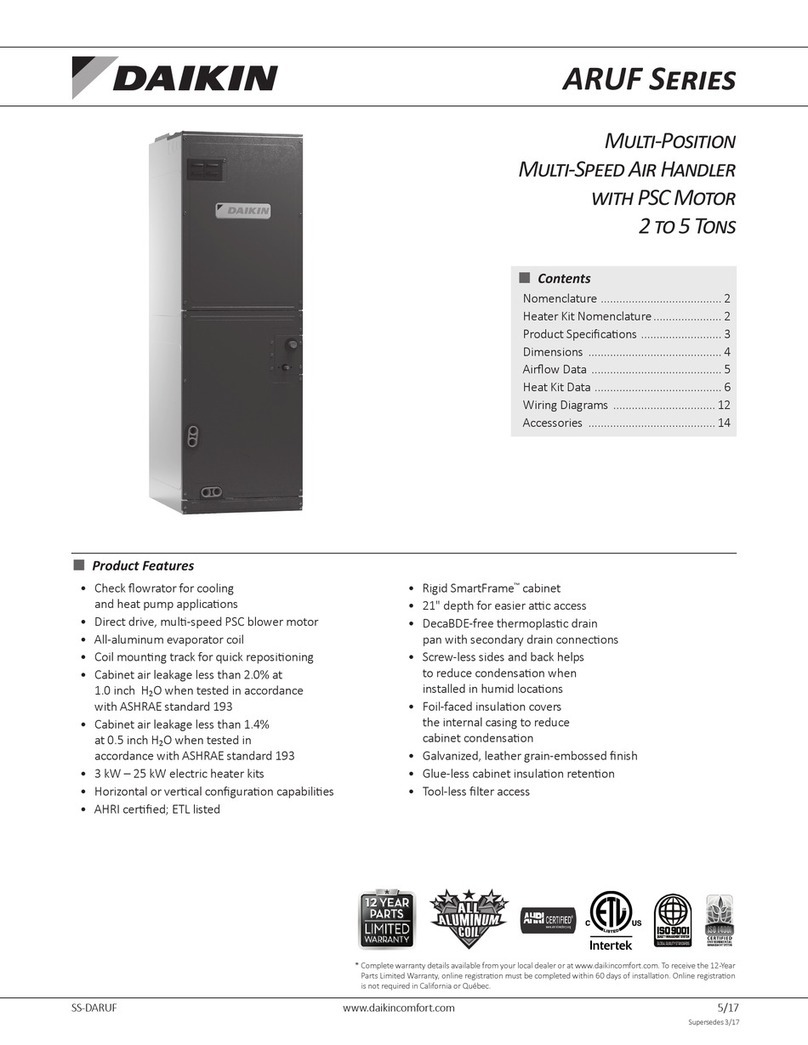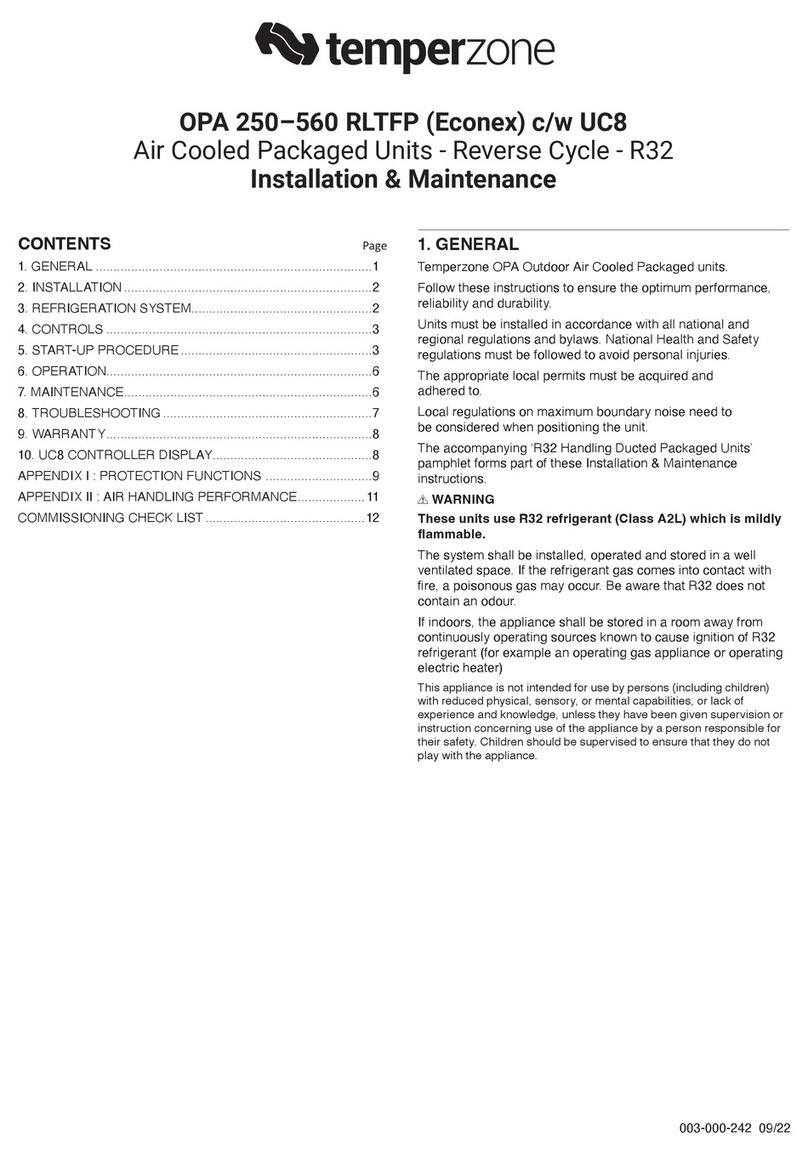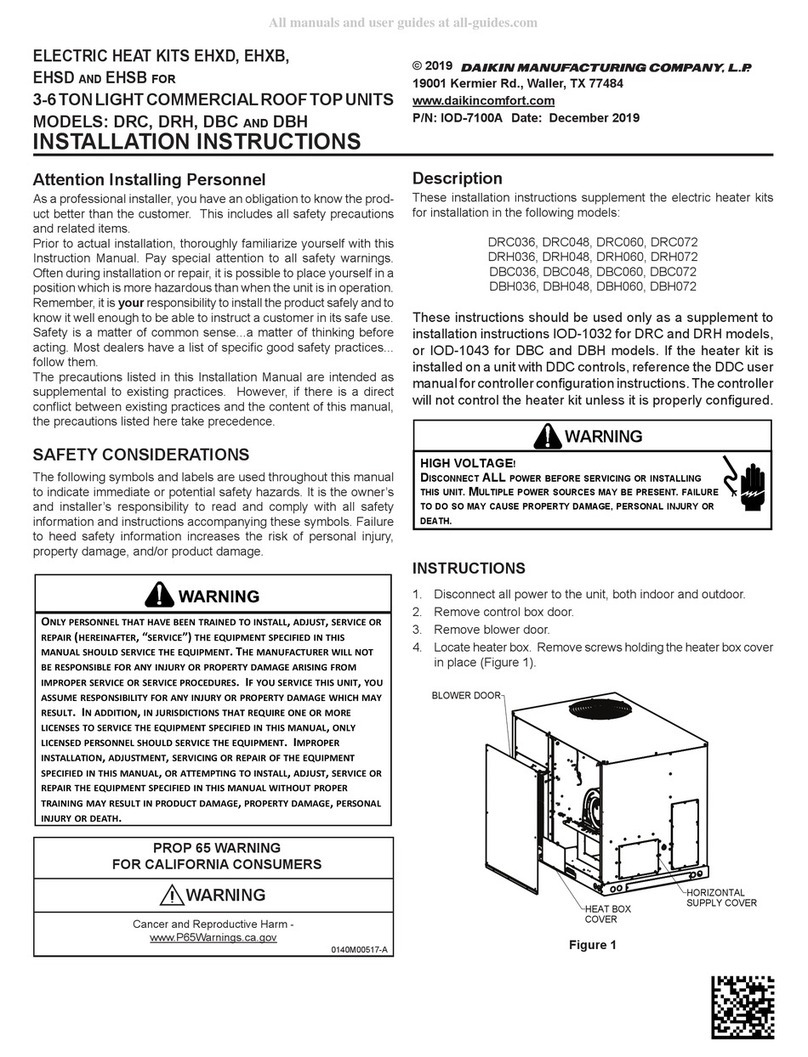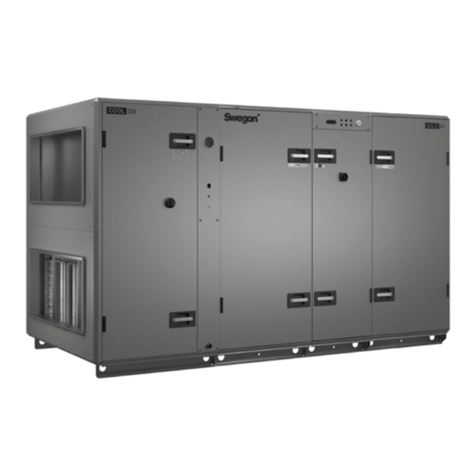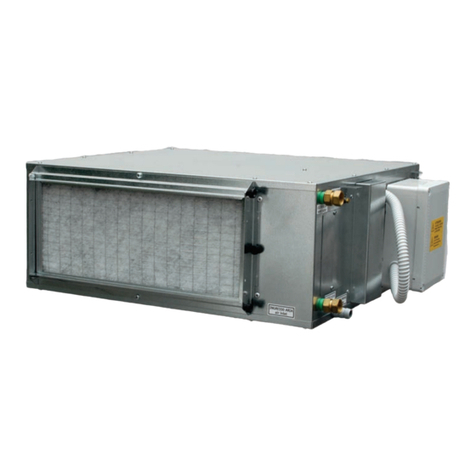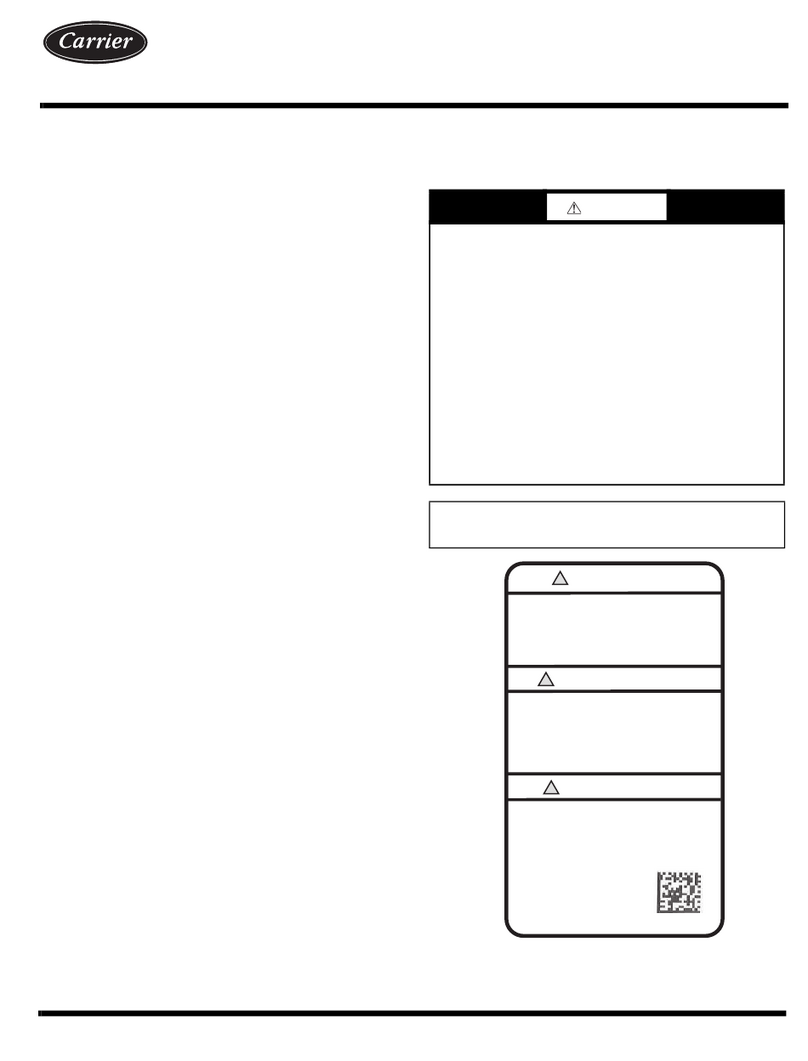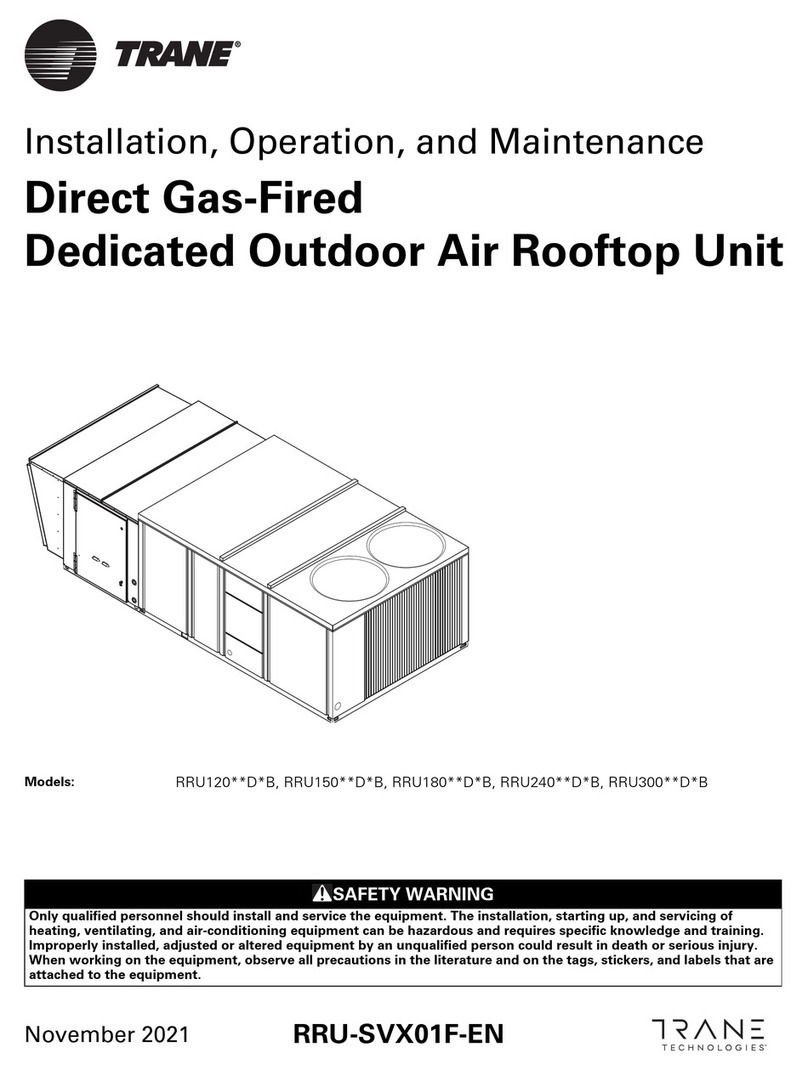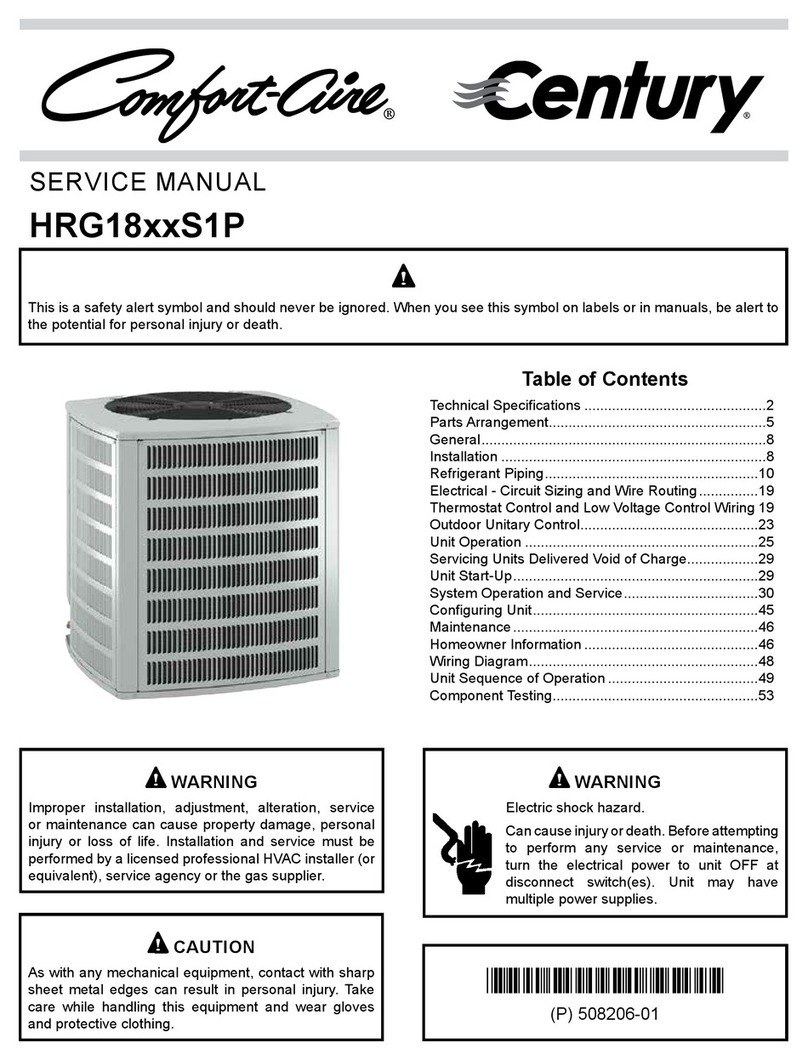
17
We make air handling technology. Better.
Air Handling Unit
Installation, Operation, and Maintenance Manual
April 2021
11.0 Startup
Once the ClimateCraft air handling unit is fully assembled,
installed and all utilities have been connected, the unit is
now ready for operation. However, before doing so, check
the following:
a) Conrm building supply voltage matches
the voltage for which the unit is wired. If the
unit receives 575V power or the VFD has
100’ or more wire between it and the motor,
ClimateCraft recommends the insertion of a load
reactor between the VFD and the motor;
b) Check contractor-made pipe and wire
penetrations for water tightness. Penetrations
must be watertight to prevent water damage to
the unit and building;
c) Manually rotate fans to ensure free operation.
Remove any dirt or debris that may have
accumulated during installation;
d) Verify all shipping bolts from fan bases have
been removed so fan/motor assemblies are free
oating on isolators;
e) Check the fan bearing setscrews for tightness;
f) Check alignment of sheaves and V-Belts (see
maintenance section);
g) Inspect all fasteners to ensure none have
loosened during shipment or installation;
h) Verify all lters are installed;
i) Verify damper blades have free movement;
j) Verify proper rainhood installation, if applicable.
11.1 Fan Startup
a) Connect power to the unit;
b) Turn on disconnect;
c) Momentarily energize fan contactor and verify
fan rotation; (Typically, a fan rotation arrow is
clearly marked on the side of the fan.) If the fan
rotates the wrong direction, disconnect power
and reverse rotation of the fan by interchanging
any two of the three-phase power leads at the
fan contactor. If the unit has multiple fans, take
care not to interchange power leads for correctly
operating fans.
d) Repeat steps “b” and “c” until all fans have been
veried.
e) Check bearing and motor lubrication after the
initial run.
f) Variable pitch sheaves should be replaced with
xed pitch sheaves once the system is balanced.
This will reduce the potential for belt failure and
possibly quiet the unit.
A ClimateCraft startup form is available for recording
startup conditions by contacting ClimateCraft Service by
email at support@climatecraft.com.
12.0 Maintenance
Disconnect all electric power, including remote disconnects
before servicing. Follow proper lockout/tagout procedures
to ensure the equipment cannot be inadvertently energized.
Verify with an appropriate voltmeter that all capacitors have
discharged. Failure to disconnect power and discharge
capacitors before servicing could result in death or serious
injury.
⚠
WARNING
12.1 Belt-Driven Fan Maintenance
A scheduled maintenance program is required for proper
operation of the belt-driven fans in your ClimateCraft
air handling unit. A preventive maintenance schedule
should be developed and coordinated with maintenance
personnel. Following is a list of items that should be
included in the preventive maintenance program:
a) Verify fan is rotating in the intended direction;
b) Remove dirt, oil and grease build-up on and
around the fan and motor bearings and on
shafts;
c) Check sheave alignment;
d) Check sheaves and belts for wear and proper
tension;
e) Check set screws on sheaves;
f) Lubricate fan and motor bearings on a regular
basis in accordance with usage guidelines.
g) Verify integrity of extended lube lines, if
installed. Extended lube lines should be
securely attached and free of kinks, cracks or
other damage.
12.2 Sheave Adjustment
MVP Variable Speed – Figure 12-1
a) Slack off all belt tension by moving motor
towards driven shaft until belts are free of
grooves. For easiest adjustment, remove the
belts from the grooves.
b) Loosen both locking set screws A in outer
locking ring.
c) Adjust Sheave to desired pitch diameter by
turning the outer locking ring. Three holes 120º
apart are provided for a spanner wrench or drift
for ease of turning.
d) Any pitch diameter can be obtained within the
sheave range. One complete turn of the outer
locking ring will result in .233” in pitch diameter.
e) Do not open “B” sheaves more than 4 ¾ turns
for “A” belts or 6 turns for “B” belts.
f) Do not open “C” sheaves more than 9 ½ turns
g) Do not open “D” sheaves more than 13 turns.
h) Do not open “5V” sheaves more than 6 turns.




















